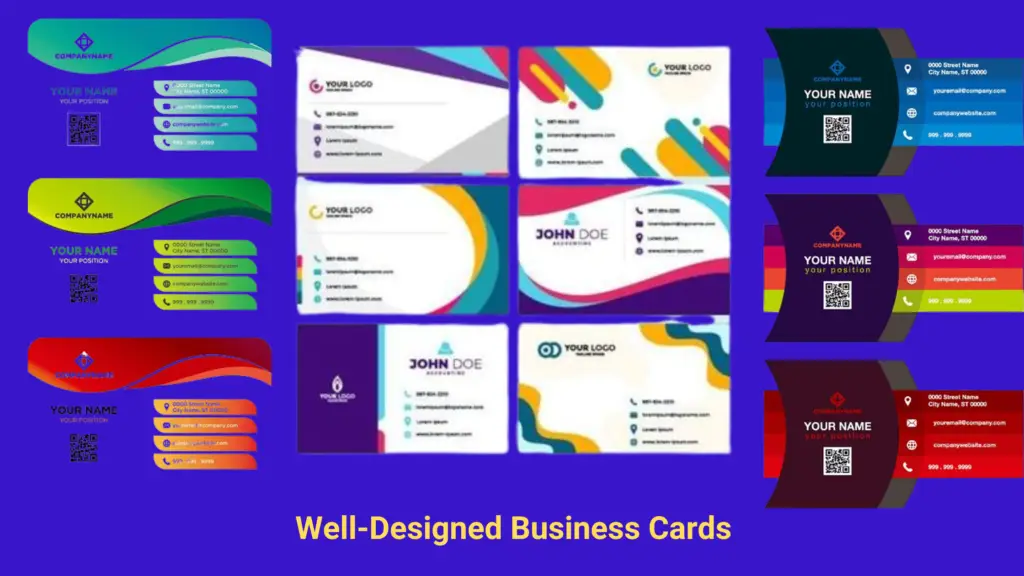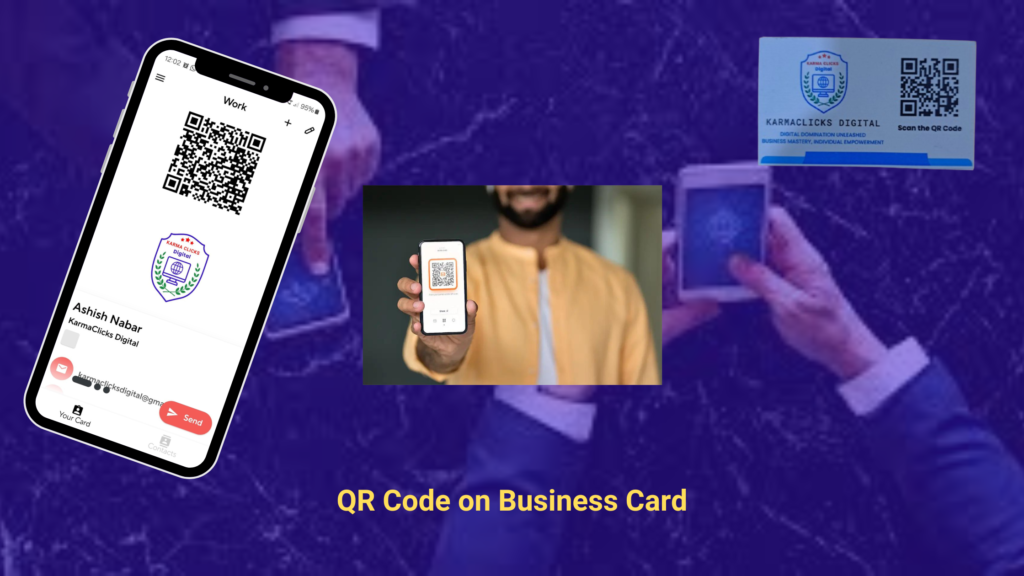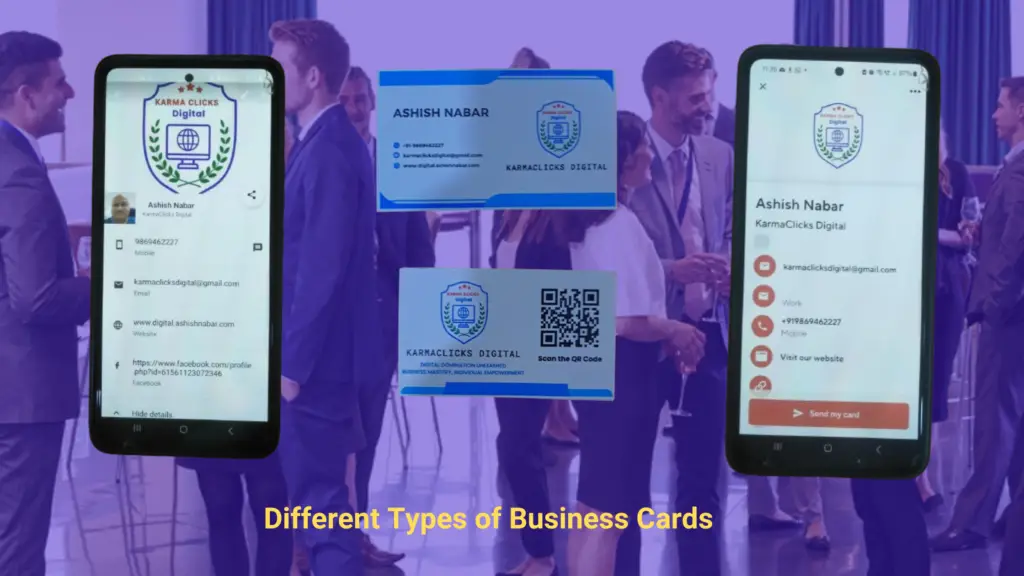Table of Contents
ToggleDon't Ditch the Card Just Yet: The Power of the Modern Business Card (Digital & Beyond)
Imagine this: you’re at a bustling networking event, weaving through a sea of professionals with aspirations as diverse as the business cards they carry. You strike up a conversation with a potential client whose interests align perfectly with your services. Just as you reach for your phone to exchange contact details, disaster strikes—your battery dies. Panic sets in, but then you remember your trusty business cards tucked safely in your pocket. Crisis averted; the connection is made.

In today’s digital world, where smartphones and social media dominate communication, one might question the relevance of the humble business card. Do they still hold value in forging professional relationships, or are they relics of a bygone era? Join me as we explore the enduring power of business cards in the realm of networking, branding, and making memorable first impressions. Whether you’re a seasoned entrepreneur or just starting out, understanding their role in business etiquette and marketing could make all the difference in your next encounter. Let’s delve into the world of business cards and discover why they continue to be indispensable tools for success in the modern business landscape.
The Enduring Power of Business Cards
Beyond Contact Information - Building Relationships
Beyond its practical utility, a well-designed business card signifies professionalism and commitment, laying the foundation for lasting relationships. Business cards serve as tangible extensions of your brand identity, fostering face-to-face interactions essential for building genuine rapport and trust.
In digital marketing, where algorithms and analytics drive strategies, the human element—forged through personal connections—remains indispensable. Referrals and word-of-mouth marketing, catalyzed by a memorable business card exchange, exemplify how these traditional tools continue to influence and elevate modern networking efforts.
A thoughtfully exchanged business card not only shares contact details but also creates a memorable impression, reinforcing your professionalism and commitment and initiating a potential relationship grounded in authenticity and personal engagement, making it a cornerstone of effective networking and marketing efforts.
A Tangible Representation of Your Brand
A well-designed business card not only conveys professionalism but also encapsulates the essence of your brand in a compact format. Beyond merely displaying contact information, every aspect of the card—from its layout and typography to its choice of colours and materials—speaks volumes about your brand’s identity and values.

Elements such as premium paper stock, innovative finishes, and a thoughtful layout contribute to its visual appeal and tactile quality, reinforcing the quality and attention to detail synonymous with your business. Integrating design elements that echo your digital marketing strategy such as using the same colour palette or typography, reinforces brand consistency and the business card becomes a seamless extension of your online presence.
This harmonious integration enhances brand recognition and recall, ensuring that each business card exchange becomes a memorable and impactful representation of your business’s commitment to excellence.
Choosing the Right Business Card for You
Consider Your Industry and Target Audience
When selecting the right business card, it’s crucial to consider your industry and target audience to make a lasting impression.
Choosing the right business card involves thoughtful consideration of both your industry’s norms and the preferences of your target audience. Each type of business card carries its distinct advantages and can significantly influence how your brand is perceived.
Classic Business Card
Classic business cards are characterized by their simplicity and professionalism. They typically feature clean designs, standard rectangular shapes, and traditional colour palettes such as whites, blacks, and blues. These cards are ideal for industries where a conservative and reliable image is crucial, such as law firms, financial institutions, and corporate consulting. For instance, a lawyer’s business card often focuses on clarity, using a serif font and minimalistic design to convey trustworthiness and expertise.
Creative Business Card
Creative business cards break away from tradition and aim to make a bold statement. They can come in various forms, including die-cut shapes, folded cards, or unconventional materials like metal or wood. These designs are particularly effective for businesses in creative fields such as graphic design, advertising, and fashion. For example, a graphic designer may opt for a business card shaped like a miniature palette or utilize bright colours and playful typography to showcase their artistic flair and innovation. Creative cards are memorable and can leave a lasting impression, making them suitable for industries where standing out is advantageous.
Eco-Friendly Business Card
In today’s environmentally conscious world, eco-friendly business cards are gaining popularity. These cards are typically made from recycled materials, sustainably sourced paper, or even biodegradable substances. They appeal to consumers and businesses that prioritize sustainability and environmental responsibility. Industries such as renewable energy, organic products, and green technology can effectively convey their commitment to sustainability through their choice of business card materials. For instance, a solar energy company might opt for a business card made from recycled paper or soy-based ink, aligning its brand with eco-conscious values.
Tailoring Business Cards to Your Industry and Audience
When selecting a business card type, it’s essential to consider how it aligns with both your industry’s expectations and the preferences of your target audience. A creative agency, for example, thrives on innovative and artistic expression, making a creative or unconventional business card a natural choice. Such business cards not only reflect the agency’s creativity but also serve as tangible representations of its design capabilities.
Conversely, a law firm or financial consultancy would prioritize professionalism and reliability, making classic business cards the preferred option. These business cards convey a sense of trust and competence, essential qualities in industries where credibility and expertise are paramount.
Moreover, understanding your target audience’s preferences is crucial. For instance, younger demographics or those in tech-savvy industries may appreciate creative and visually engaging business cards that reflect modernity and innovation. On the other hand, older or more conservative audiences might prefer classic designs that emphasize clarity and professionalism.
Whether opting for a classic, creative, or eco-friendly design, each type of business card serves as a powerful tool for making a memorable impression and communicating your brand’s values effectively. By aligning your business card with these considerations, you can ensure that it not only stands out but also reinforces the right image and message about your business.
Information Essentials (and What to Avoid)
When designing a business card, the goal is to create a professional and memorable representation of yourself or your business. To achieve this, including the right information is crucial. Here are the essential elements every business card should contain:
Your Name and Title
This is perhaps the most important piece of information on your business card. Your name should be prominently displayed and easy to read. Including your title or position helps the recipient understand your role within the organization or business. For example, “Ashish Nabar, Marketing Manager” clearly indicates both your identity and your function within the company.
Business Logo (if applicable)
A business logo is an essential branding element that helps to visually associate your business card with your company. A well-designed logo can make your card stand out and be easily recognizable. Ensure the logo is high quality and placed in a position where it complements the overall design without overshadowing the text.
Contact Details (Phone, Email, Website)
Providing multiple contact methods is essential as it gives the recipient various ways to reach you. Include a direct phone number and an email address that you check regularly. Additionally, if your business or professional profile has an online presence, including your website is crucial. It allows potential clients or contacts to learn more about your services or products.
Social Media Handles (optional)
In today’s digital age, social media handles can be an excellent addition to your business card, especially if your business actively engages with clients or customers on these platforms. Including handles for professional networks like LinkedIn can be particularly beneficial. However, this is optional and should be included only if it adds value and maintains the business card’s professional appearance.
While it’s essential to include the above information, it’s equally important to avoid cluttering your business card with unnecessary details. Here are some items to avoid:
Lengthy Addresses
Including a full postal address is generally unnecessary unless you run a location-based business where clients need to visit you in person frequently. A brief mention of the city or area might suffice to give context without taking up too much space.
Unnecessary Clutter
Keep the design clean and straightforward. Avoid including too much text or overly complex graphics, which can make the business card look crowded and difficult to read. Stick to the essential information and ensure there is plenty of white space to keep the business card looking professional and easy to navigate.
Personal Information
Avoid adding personal details such as your home address or personal phone number unless it is necessary for your business. This not only helps in maintaining a professional boundary but also protects your privacy.
Outdated Information
Regularly update your business cards to ensure that all information is current. Distributing business cards with outdated phone numbers, email addresses, or titles can lead to missed opportunities and confusion.
In summary, the key to an effective business card is balance. This approach ensures your business card is a professional, concise, and effective networking tool.
Bonus Tip: Business Cards in the Digital Age
In today’s increasingly digital world, traditional business cards can be seamlessly integrated with digital technology to enhance their functionality and ensure they remain relevant. Incorporating digital elements not only modernizes your business card but also provides a more dynamic and engaging way to connect with potential clients or business partners.
Here are some innovative ways to integrate your business card with the digital world:
QR Codes Linking to Your Online Portfolio or Website
One of the most effective ways to merge the physical and digital realms is by including a QR code on your business card. QR codes are small, scannable squares that can store various types of information, including URLs. By embedding a QR code that links directly to your online portfolio, website, or LinkedIn profile, you provide recipients with instant access to a wealth of information about you and your business.
This is particularly useful for showcasing your work, providing detailed information about your services, or guiding them to a landing page with more interactive content. To ensure the best user experience, make sure the linked content is mobile-friendly, as most people will scan the QR code using their smartphones.

Using a Business Card Scanning App for Easy Contact Information Transfer
Another way to embrace digital transformation is through business card scanning apps. These apps allow users to quickly and accurately capture the information on your business card and save it directly to their contact list. Some popular apps include CamCard, ScanBizCards, and ABBYY Business Card Reader. By suggesting the use of such an app during networking events, you make it easier for your contacts to store and access your information without the hassle of manual entry. Moreover, some apps offer additional features like integration with CRM systems, which can be particularly beneficial for sales professionals and business developers.
Digital Business Cards
An emerging trend is the use of entirely digital business cards. These can be shared via email, text message, or through dedicated platforms like HiHello, Blinq, or Haystack. Digital business cards are eco-friendly, eliminating the need for paper and physical storage. They also offer the flexibility to update your information in real time, ensuring your contacts always have the most current details. Additionally, digital cards can include multimedia elements such as videos, images, and clickable links, providing a richer and more interactive experience.
Refer Video : The Future of Networking: Why You Need a Digital Business Card (NOW!)

NFC (Near Field Communication) Technology
For an even more high-tech approach, consider using NFC-enabled business cards. NFC technology allows information to be transferred between devices when they are in close proximity. An NFC-enabled business card can store your contact information, website links, social media profiles, and more. When someone taps their NFC-compatible smartphone against your card, the stored information is instantly transferred to their device. Companies like Popl and V1CE offer customizable NFC business cards that can be linked to your digital profile.
Social Media Integration
As mentioned earlier, including social media handles on your business card can be advantageous, but you can take this a step further by ensuring these handles lead to professionally curated profiles. If you are active on platforms like LinkedIn, Twitter, or Instagram, make sure your profiles are up-to-date and reflective of your professional persona. Social media can serve as an extension of your business card, offering additional insights into your professional background, expertise, and network.
Augmented Reality (AR)
For those looking to truly innovate, incorporating augmented reality features into your business card can create a memorable experience. By using AR apps like Layar or Blippar, you can design business cards that come to life when viewed through a smartphone camera, displaying interactive content such as video introductions, 3D animations, or dynamic portfolios.
In conclusion, while traditional business cards remain a vital networking tool, integrating digital elements can significantly enhance their impact and utility. By adopting these technologies, you not only make it easier for people to connect with you but also leave a lasting impression that sets you apart in a competitive business environment.
Conclusion
In conclusion, business cards remain an indispensable tool for freelancers in the digital marketing space, offering a tangible connection in an increasingly virtual world. They serve as a compact yet powerful representation of your brand, combining essential information with a professional design to leave a lasting impression.
The choice of business card type should be guided by a deep understanding of your industry’s norms, your brand’s identity, and the expectations of your target audience.
Include essential information such as your name, title, business logo, contact details, and optionally, social media handles, while avoiding lengthy addresses, unnecessary clutter, personal details, and outdated information
QR codes, business card scanning apps, digital business cards, NFC technology, social media integration, and even augmented reality are all powerful ways to bring your business card into the digital age.
For expertly crafted business cards that blend tradition with innovation, connect with KarmaClicks Digital today and let us help you make a memorable impact.

Nice information
Thanks Ma’am!